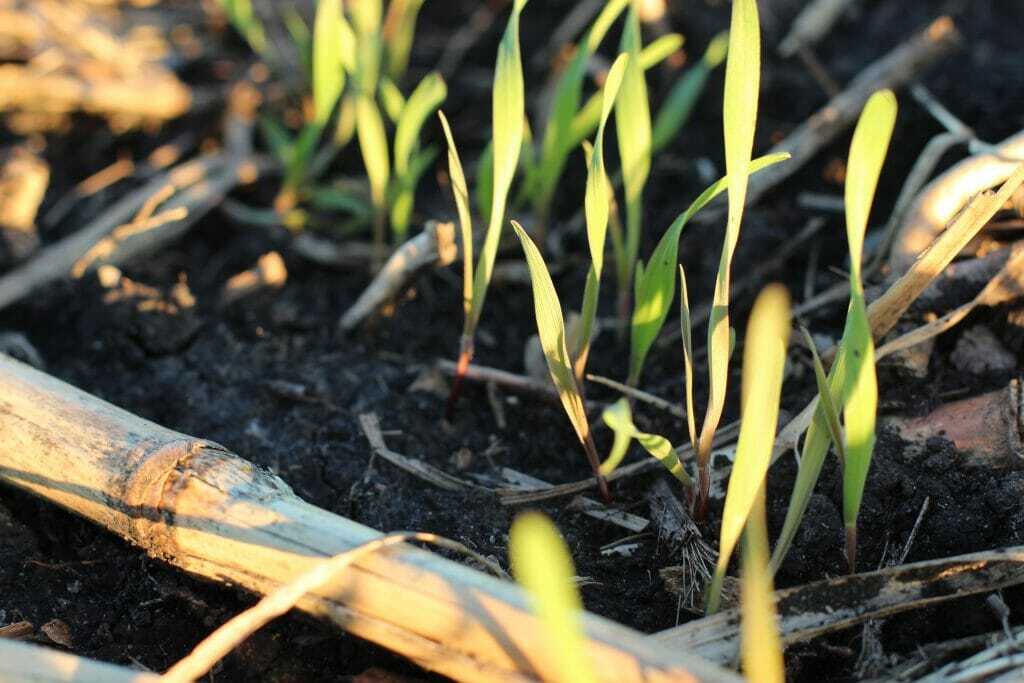Improve Soil Health with Cover Crops
Taking soil samples and then implementing “3 Ps” is key to building soil health: (1) Sample; (2) Plan; (3) Plant and (4) Be Patient. The focus of my post is to provide tips for developing a plan that will leave your soil in better shape for future generations.
Sample: It is hard to now where to go, when you don’t know where you are. That’s why baseline tests are so important.
In addition to working for Latham Hi-Tech Seeds, I also work part time in the emergency room and am a paramedic in rural Wisconsin. When a sick patient is admitted to the hospital, a blood sample test is run. Results from this CBC, or complete blood count, and other tests become the foundation on which we develop the best suited treatment plan. This is really a customized approach to treating a situation because everyone is different.
The same is true with soils. Every single soil is unique, and the state of its biological soil health is based on several factors that only soil sampling can truly reveal. Once we have soil sampling results, we have a point from which we can develop the best suited plan.
There are a lot of tests available, but I have found the most useful test is the Solvita soil test by Woods End Laboratories. This test gives an overview of the biological health of the soil. It also actually provides a recommendation of the best cover crop combination to the benefit and build the soil.
If you’re not already doing so, I encourage you this season to develop the best suited plan to start building your soil structure. Start small, so you don’t get overwhelmed. Choose a soil you believe needs the most help. NOTE: Most conventionally-tilled soils could benefit. Use the absolute best soil sampling equipment you can find. Be very diligent in collecting the sample because the data you get back is only as good as the sample the lab receives from you.
Take your time. Enjoy the experience as you embark on a journey of doing something good for humanity. – Corey Catt, Latham Forage Product Specialist
Plan: Now that you have results from soil samples, develop a plan to accomplish your goals. Sometimes it’s easier to take a small acreage out of production, and plant a green manure mix. Here are some plants to consider:
- Grasses, like Latham’s PROTECTioN Cereal Rye, scavenge for excess nitrogen. Grass roots help reduce run off.
- Legumes, like Latham’s FixatioN Balansa Clover produce nitrogen and help reduce run off.
- Brassicas, like Latham’s Driller Daikon Radish help penetrate hard pan and provide a little fertility benefit.
If you plan to interseed cover crops into your existing corn or soybean field in mid-summer, be very mindful of what herbicide you are using because carryover can reduce your cover crop emergence and growth. In particular, the residual of Dicamba herbicide really restricts your cover crop options.
Plant: Cover crops may be drilled, broadcast seeded, ariel seeded or even seeded using a Hi-Boy. Equipment is usually a limiting factor to what cover crops get planted. Some county soil conservation offices rent equipment. They also have funding available to pay for some cover crops.
PATIENCE: Being patient is the hardest part of trying cover crops and rebuilding soil health. You must think long term rather than seek short-term gratification. When we go through the investment efforts, we would like instant results.
Fact is, you are getting results albeit they are subtle. In many cases, however, the results are exponential when you commit to the plan for years. One Indiana grower found he has increased organic matter (OM) over time. This is huge as increasing OM also increases the water holding capacity in the root zone, which correlates to more yield potential, especially during dry conditions. This grower says he’s gaining about .1% OM every year that he no-tills and uses specific cover crops.
Consider that in 10 years you could gain another 1% OM. Every 1% OM holds about 1 acre inch of rain, which is around 27,000 gallons. Every year you increase the water holding capacity, you improve your chances of higher yield.
We’re all about helping you “grow your legacy” at Latham Hi-Tech Seeds! Feel free to call me if you’re interested in setting up an on-farm trial for cover crops this growing season. We might even be able to partner with you to try some new products or different rates / seeding studies of existing products. Also note that the 2020 Latham® Seed Product Guide will be distributed in July 2019, so be sure to check out our production offering for Fall 2019 seeding.
